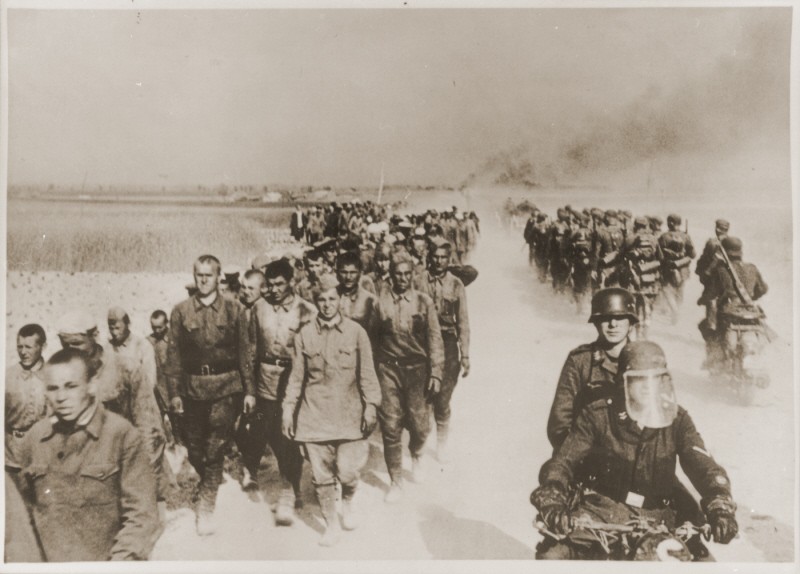
The Treatment of Soviet POWs: Starvation, Disease, and Shootings, June 1941–January 1942
Germans Reject Geneva Convention
From the very beginning, German policy on the treatment of Soviet prisoners of war (POWs) was determined by Nazi ideology. German political and military leaders regarded Soviet POWs not only as racially less valuable but as potential enemies, obstacles in the German conquest of "living space." The Nazi regime claimed that it was under no obligation for the humane care of prisoners of war from the Red Army because the Soviet Union had not ratified the 1929 Geneva Convention on Prisoners of War, nor had it specifically declared its commitment to the 1907 Hague Convention on the Rules of War. Technically both nations, therefore, were bound only by the general international law of war as it had developed in modern times. Yet even under that law, prisoners of war were to be protected.
Policy of Mass Starvation in the East
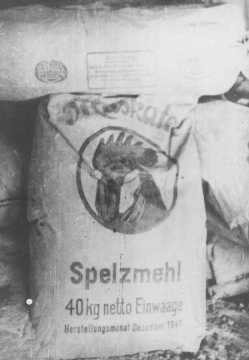
Soviet prisoners of war were the first victims of the Nazi policy of mass starvation in the east. In August 1941, the German army set a ration of just 2,200 calories per day for working Soviet prisoners of war. Even this was not enough to sustain life for long, but in practice the POWs received much less than the official ration. Many Soviet prisoners of war received at most a ration of only 700 calories a day. Within a few weeks the result of this "subsistence" ration, as the German army termed it, was death by starvation. The POWs were often provided, for example, only special "Russian" bread made from sugar beet husks and straw flour. Suffering from malnutrition and nearing starvation, numerous reports from the late summer and fall of 1941 show that in many camps the desperate POWs tried to ease their hunger by eating grass and leaves.
Epidemics
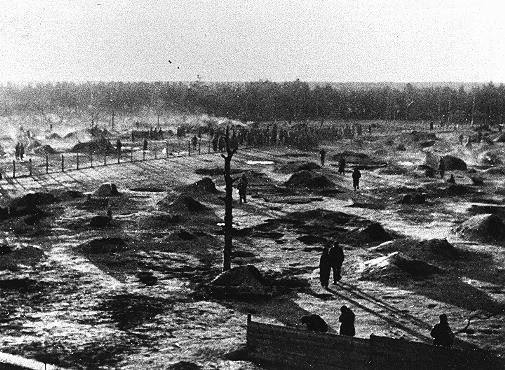
The Germans made little provision to shelter most of the prisoners they took from the Soviet military. Eventually the Germans established makeshift camps but the lack of proper food, clothing, and shelter took a terrible toll. Often the prisoners had to dig holes in the ground as improvised shelter from the elements. By the end of 1941, epidemics (especially typhoid and dysentery) emerged as the main cause of death. In October 1941 alone, almost 5,000 Soviet POWs died each day. The onset of winter accelerated the mass death of Soviet POWs, because so many had little or no protection from the cold.
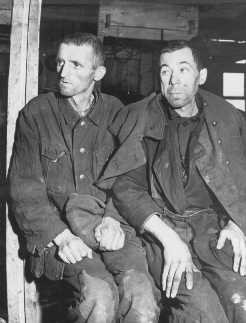
Even in POW camps in Germany, Soviet POWs had often been left for months to vegetate in trenches, dugouts or sod houses. In the occupied eastern territories conditions were even worse. In Belorussia only pavilions (structures with roofs but no walls) were available to house Soviet POWs. By the winter of 1941, starvation and disease resulted in mass death of unimaginable proportions.
Many Soviet soldiers, including many wounded, died on the way to the prisoner collection centers and transit camps; others died during transit to camps in occupied Poland or the German Reich. Most of the prisoners captured in 1941 had to march to the rear across hundreds of miles and those who were too exhausted to continue were shot to death on the spot. When Soviet POWs were transported by train, the Armed Forces High Command permitted only open freight cars to be used. Sometimes days went by without the prisoners receiving any rations. This resulted in an enormous loss of life during winter months. According to army reports between 25 percent and 70 percent of the prisoners on these transports from the occupied Baltic countries died en route to Germany.
Mass Shootings
The large number of dead was due not just to irresponsible neglect by German officers but also to mass shootings. The Germans shot severely wounded Soviet soldiers to free the German army of their care. Time and again German forces were called upon to take "energetic and ruthless action" and "use their arms" unhesitatingly "to wipe out any trace of resistance" from Soviet POWs. Those attempting to escape were shot without warning. Moreover, a decree issued on September 8, 1941, stated that the use of arms against Soviet POWs was, "as a rule, to be regarded as legal"—a clear invitation for German soldiers to kill Soviet POWs with impunity.
In the middle of July 1941, Gen. Hermann Reinecke, who was the officer in charge of prisoner-of-war affairs in the Armed Forces High Command, permitted security forces under the Reich Security Main Office to screen Soviet prisoners of war in the POW camps for "politically and racially intolerable elements" among the Soviet prisoners. These prisoners were transferred to SS jurisdiction and killed. This contributed to an enormous rise in the number of victims, since not only were "all important state and party functionaries" regarded as "intolerable," but so were "intellectuals," all "fanatic Communists," and "all Jews."
Executions
The executions did not take place in the prisoner-of-war camps or their immediate area. Instead, prisoners were transferred to a secure area and shot. The concentration camps proved an ideal location for executions. In Gross-Rosen concentration camp, for example, the SS killed more than 65,000 Soviet POWS by feeding them only a thin soup of grass, water, and salt for six months. In Flossenbürg, SS men burned Soviet POWs alive. In Majdanek, they shot them in trenches. In Mauthausen, Austria, so many POWs were shot that the local population complained that their water supply had been contaminated. The rivers and streams near the camp ran red with blood. Estimates of the numbers of victims of this operation range from at least 140,000 up to 500,000.
Killing Centers
The Auschwitz-Birkenau and Majdanek camps had originally been constructed for the Soviet POWs that Heinrich Himmler had claimed for himself. The POWs were to be put to work in the huge industrial conglomerates that the SS was planning to set up together with firms such as I.G. Farben. But in January 1942, only a few hundred of the Soviet prisoners who had originally been brought to Auschwitz—out of a total of 10,000—were still alive, and no further influx was expected. For this reason Himmler decided, in the week following the Wannsee Conference, to fill the camps with 150,000 Jews. In this manner the SS camps for POWs became part of the infrastructure for the murder of the Jews.
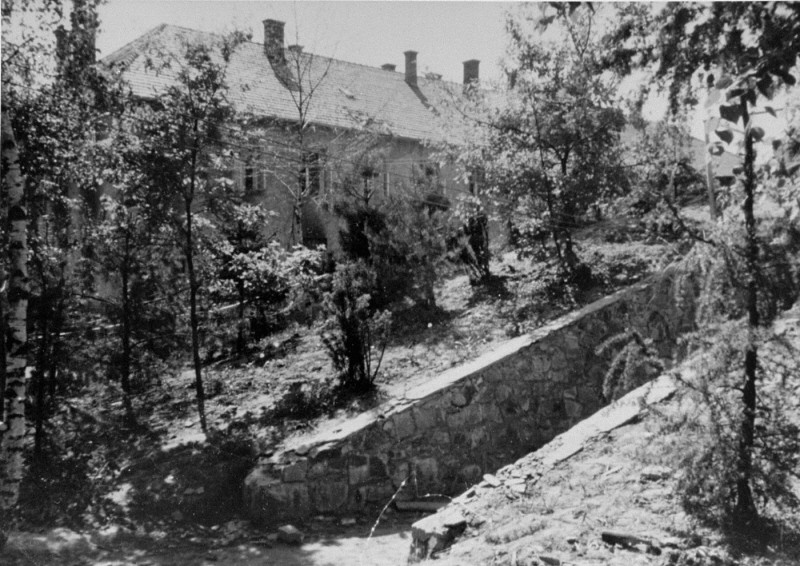
It was when dealing with Soviet POWs at Auschwitz that camp commandant Rudolf Hoess and his assistants experimented with the means of killing that has since become the symbol of Nazi genocide: Zyklon B. In early September 1941, 600 Soviet POWs were selected for execution. Hoess decided to gas them with Zyklon B, also known as hydrogen cyanide, in the Auschwitz I gas chamber. The experimental gassing here also included 250 inmates who had been designated unfit for work. The Nazis had already experimented with gassing as the means to kill people they considered disabled beginning in October 1939. A method was thereby found that would kill millions of people with minimal effort. Those lessons were subsequently applied first to Soviet POWs and then to Jews. By February 1942, 2,000,000 of the 3,300,000 Soviet soldiers in German custody up to that point had died from starvation, exposure, disease, or shooting.
Critical Thinking Questions
- Compare and contrast the treatment of Soviet POWs and captured soldiers of other enemies by the Nazi military.
- What international agreements govern treatment of POWs? How have they changed since the end of World War II?
- Do these agreements and regulations apply to fighters not aligned with a particular country or its military? How have modern nations responded to this circumstance?

